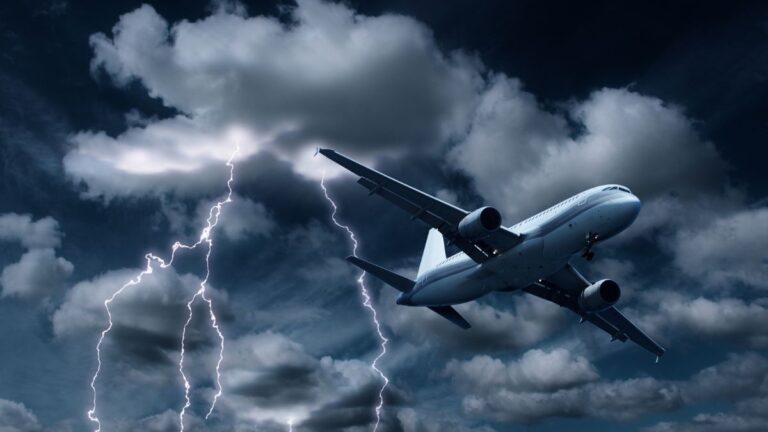What Is The Difference Between Terminal And Gate At The Airport?

As participants in Amazon Associates and other programs, we earn from qualifying purchases. This comes at no additional cost to you. For more details, see our Affiliate Disclosure.
Airports can be confusing places, especially for those who are not frequent travelers. One of the most common areas of confusion is the difference between the terminal and the gate. Although they are both important parts of the airport experience, they serve different functions and are located in different areas of the airport.
The terminal is the main building of the airport where passengers check-in, go through security, and wait for their flights. It is the central hub of airport activity and is where most of the airport’s amenities, such as restaurants, shops, and lounges, are located. On the other hand, the gate is the specific location where passengers board their flights. It is usually located in a separate area from the terminal and is designated by a number or letter.
Understanding the difference between the terminal and gate is essential for a smooth and stress-free airport experience.
Definition of Terminal and Gate
The airport terminal is the main building where passengers go through check-in, security, and wait for their flights. It is the central hub of airport activity and contains various amenities such as restaurants, shops, and lounges.
The gate, on the other hand, is the specific location where passengers board their flights. It is a designated area, usually located in a separate section of the airport from the terminal, and is identified by a number or letter. The gate is where passengers will typically wait until their flight is ready for boarding, and it is also where they will show their boarding pass and ID before entering the plane.
Functions of the Terminal and Gate
The terminal serves several functions in the airport experience. First, it is where passengers check-in for their flights, either through a self-service kiosk or with a representative at the airline counter. After check-in, passengers will typically proceed to the security checkpoint, where they will undergo a screening process before entering the gate area. The terminal also contains various amenities, such as restaurants, shops, and lounges, that passengers can use while waiting for their flights.
The gate, on the other hand, serves a more specific function in the airport experience. It is the location where passengers board their flights, and it is typically where they will wait until their flight is ready for boarding. At the gate, passengers will show their boarding pass and ID to airline personnel before entering the plane. The gate is also where the airline staff will typically make announcements regarding boarding times, delays, or other important information related to the flight.
Terminal Layout and Amenities
The layout of airport terminals can vary depending on the airport, but most follow a similar design. Terminals are typically divided into different sections or levels, with check-in counters and baggage drop-offs located on the ground floor. After check-in, passengers will usually proceed to a separate level for security screening, and then to the gate area.
The gate area is usually located in a separate section of the terminal and can be accessed by following signs or asking airport staff for directions. Once in the gate area, passengers can typically find seating, charging ports, and other amenities such as restaurants, shops, and lounges.
Airport terminals can also offer additional services such as currency exchange, luggage storage, and information desks to assist passengers with their travel needs. Some airports may even have facilities such as spas, prayer rooms, or children’s play areas to help passengers relax and unwind before their flights.
Gate Location and Boarding Process
The gate is typically located in a separate area from the terminal, often connected by a walkway or shuttle bus. Gates are usually numbered or lettered to help passengers locate their specific boarding location.
The boarding process at the gate typically follows a specific order, with passengers boarding in groups based on their ticket class, frequent flyer status, or seat location. The airline staff will usually make announcements about when each group should board, and passengers will show their boarding pass and ID before entering the plane.
Once onboard, passengers will typically stow their carry-on luggage in the overhead bins or under the seat in front of them. The flight attendants will then provide safety instructions and prepare the plane for takeoff. After the flight, passengers will disembark the plane and exit through the gate area, where they may need to present their boarding pass or passport for immigration purposes.
How to Navigate the Terminal and Gate
Navigating the airport terminal and gate can be overwhelming, especially for first-time travelers. However, there are several tips to make the process smoother:
- Check your flight information: Before arriving at the airport, check your flight information online or through the airline’s app to confirm your gate and departure time. This can save time and prevent confusion once you arrive at the airport.
- Follow signs and directions: Airports are usually well-marked with signs indicating where to find check-in counters, security checkpoints, and gate areas. Follow these signs or ask airport staff for directions if you’re unsure.
- Arrive early: Allow plenty of time to check-in, clear security, and reach your gate area. This is especially important during busy travel periods, as lines can be long and delays can occur.
- Pack wisely: Make sure you pack your carry-on luggage according to airline regulations and remove any liquids or electronics that need to be screened separately at security.
- Keep your documents handy: Keep your passport, boarding pass, and ID in an easily accessible location, as you will need to present them at various points throughout the airport.
- Be aware of your surroundings: Pay attention to flight information displays, announcements, and boarding calls to avoid missing your flight or important updates.
By following these tips, navigating the airport terminal and gate can be a stress-free experience.
Common Confusions and Misconceptions
There are several common confusions and misconceptions about airport terminals and gates that can cause confusion for travelers:
- Terminal vs. gate: As mentioned earlier, the terminal is the main building of the airport, while the gate is the specific location where passengers board their flights. Confusing the two can lead to missed flights or other travel mishaps.
- Boarding group confusion: The order of boarding groups can vary depending on the airline and flight, leading to confusion about when to board the plane.
- Gate changes: Sometimes, airlines may change the gate assignment for a flight at the last minute, leading to confusion and missed connections.
- Security screening: Some travelers may not be aware of the restrictions on liquids, electronics, and other items that can be brought through security, leading to delays and confusion.
- International travel: International travel can involve additional steps, such as passport control and customs, which may not be familiar to all travelers.
By being aware of these common confusions and misconceptions, travelers can take steps to avoid them and ensure a smoother airport experience.
Tips for a Smooth Airport Experience
Here are some tips for a smooth airport experience:
- Arrive early: Allow plenty of time to check-in, clear security, and reach your gate area. Arriving early can help avoid stress and prevent missed flights.
- Pack wisely: Be aware of the airline’s baggage restrictions and pack accordingly. Make sure to remove any liquids or electronics that need to be screened separately at security.
- Use technology: Use online check-in, electronic boarding passes, and mobile apps to save time and reduce paper waste.
- Wear comfortable clothing: Wear comfortable clothing and shoes that are easy to take off and put on for security screening.
- Stay organized: Keep your documents, boarding pass, and ID in an easily accessible location, and use a carry-on bag with compartments to stay organized.
- Stay hydrated: Bring an empty water bottle and fill it up after security to stay hydrated during your flight.
- Know your rights: Be aware of your rights as a passenger, including compensation for delays, cancellations, and lost luggage.
By following these tips, travelers can have a smoother, stress-free airport experience.






